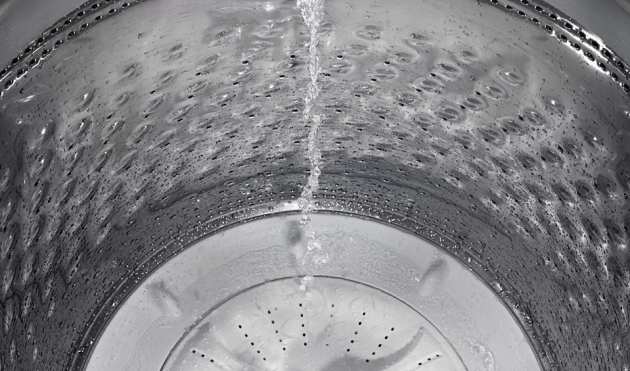A washing machine cycle is the set of instructions that the appliance used to wash our clothes and other fabric items. The cycles are typically organized as a wash, followed by a rinse, and a final rinse, based on the type of clothes, colors, fabrics, and other factors. Having a good understanding of how the washing cycles work is important to safeguard your clothes, linens, and the washing machine. In this article, we will take a closer look at five common washing machine cycles.
1. Delicates
This is a gentle cycle designed to emulate the handwashing process using cold or warm water with little to no spinning. It’s usually the shortest cycle to select and if your machine defaults to warm water we recommend that you use cold water instead. Use this cycle to wash items, such as lace, silk, lingerie, knits, cashmere, faux fur, and other items that are prone to stretching. As an extra precaution, bundle items in a mesh bag to keep them safe during the delicate wash cycle.
2. Normal
This is the default cycle; it tends to be a lengthy program with high agitation to get everyday items clean. Most modern washing machines allow you to select the water temperature that you want to use based on the type of load. Choose hotter temperatures for whites and cool or cold water for other colors. Add a fabric conditioner for softening or a capful of all-purpose bleach to brighten dull white fabrics. The normal cycle is best used for items such as T-shirts, socks, underwear, sheets, towels, and durable synthetic items.
3. Quick Wash
As the name suggests, this is the fastest wash cycle, and it’s the most energy efficient option. A quick wash tends to take 30 minutes; it’s a fast way to clean lightly soiled clothes and fabrics that are not smelly or heavily soiled. A short wash cycle is followed by a high-speed spinning cycle, and this speeds up the drying times. A quick wash is not suitable for delicate items, such as lingerie, silk, woolens, embellished, and embroidered fabrics.
4. Permanent Press
This cycle was created back in the 40s to wash synthetic, wrinkle-free, and wash and wear items that were in vogue at the time. This is a shorter cycle than the normal program, and it uses warm water combined with a lower spin. This is a rarely used cycle; most people are adequately served by the normal and delicate cycles above.
5. Other Less Used Cycles
Some washing machines have additional cycles, including: “Whitest Whites,” “Heavy Duty,” and more. Selecting these settings with one of the cycles shown above will intensify those cycles in a specific way. This can include a presoak, larger volumes of water, and other characteristics to wash heavily soiled items. The intensity of these settings can vary a great deal, and it’s important to read the owner’s manual for your machine before you choose them.
Temperature Selection
Now that you understand the purpose of the wash cycles, let’s take a quick look at temperature selection. The washing machine temperature dials have a pair of temperatures, the first refers to the water used for washing, and the second is the rinsing water temperature as follows:
- Hot-Cold: Hot cleaning, Cold rinsing.
- Warm-Cold: Warm cleaning, Cold rinsing.
- Cold-Cold: Cold cleaning, Cold rinsing.
Pretreating Stains
Color-rich stains can be pretreated with a stain solution product, or you can use a wash and stain bar if the stain is oil-based. Soak the items in warm or cool water, depending on the fabric that you’re treating. A 30 minute soak should be sufficient for heavily soiled items. All white fabrics, such as linen or cotton, should be soaked with whites detergent or an all-purpose bleach alternative.
If you’re considering a new washing machine purchase, you can explore your options with this online collection, or for further help or guidance, speak to a home appliance expert.

